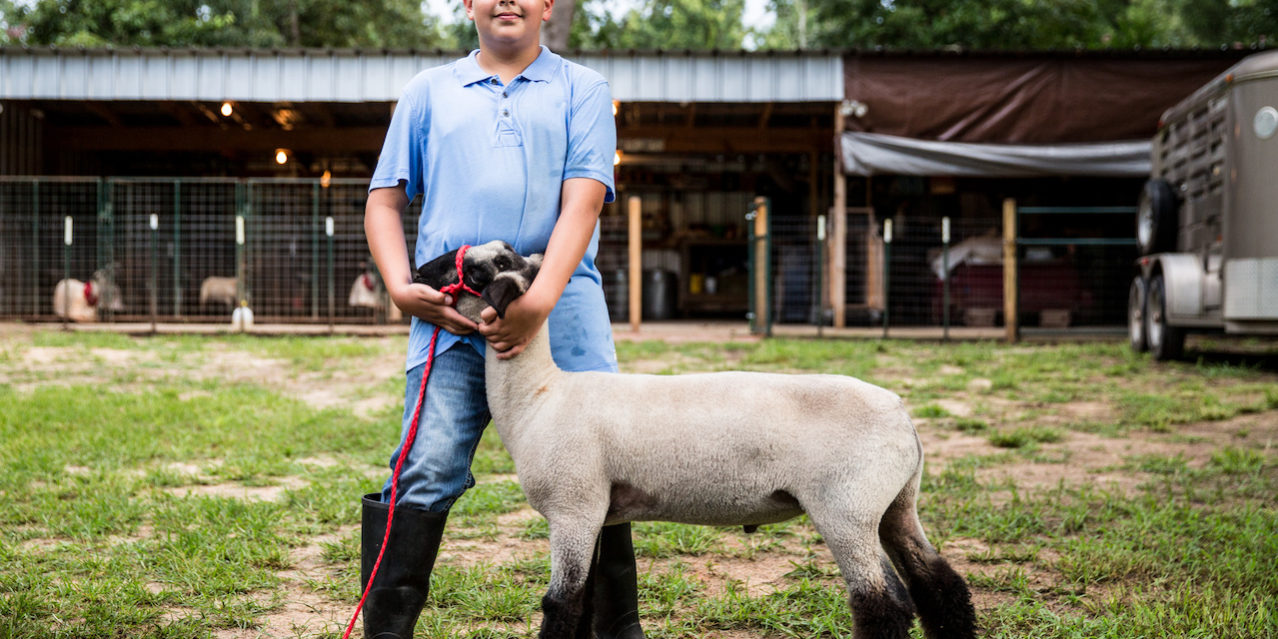Shane Potter, State 4-H Youth Development Specialist at the University of Missouri Extension 4-H Center for Youth Development, shares his insights on how to engage about livestock showing at the fair.
I was recently asked “Why do youth still raise livestock and show at the fair?” I love questions like this. They open the door to not only inform and educate but to also share the impact involvement in 4-H and livestock can have on the lives of youth. Here are the main steps I walk people through and teach my 4-Hers.
Start with a Personal Story – Leverage your Experience
I could tell you all kinds of amazing benefits gained, in general, when youth are involved in livestock projects. They gain grit and resiliency through the completion of difficult goals, creative problem solving and management skills through the process of caring for and showing animals, and are better prepared for college and careers because of the experiences and connections made in their 4-H clubs. This is all true and sounds great, but without the personal story it just doesn’t stick.
Instead I might tell you about myself, a young boy, who took part in the catch-a-lamb project. Not having sheep of his own, a local farmer provided the boy with an opportunity to raise, train, and then show a lamb at the county fair. (At this point you would see the twinkle in my eye as I think back to the pride I had in my catch-a-lamb project). The fact that someone else believed I could be successful and take care of and train a lamb was exactly what I needed to build confidence in my abilities.

As the story unfolds a picture should start to form in your mind. The triumphs and challenges the boy had in the project seem more tangible. You can understand how he gained problem solving skills when his lamb ate wood chips and bloated and he had to figure out what to do. The story attaches your main points to tangible anchors people can more easily remember.
Know Your Facts – Science is our Friend, Use It
Not only are youth livestock producers and exhibitors gaining important Life and Soft skills, they are also mastering vast amounts of animal science knowledge. Through 4-H livestock projects youth become experts on animal care including things like nutritional needs of their livestock, facility needs and maintenance, and health care.
A personal story is excellent, but don’t be afraid to share your knowledge. If someone asks you about docking a tail be ready to explain the how it helps reduce parasite infestation. I usually tell 4-Hers – This is your chance to shine and show a bit of what you have learned. It is also OK to not know everything. That is one of the great things about showing livestock, it is supposed to be a learning experience.
Model the Behavior You Describe in Your Story – Be Confident and Kind
Above all – regardless if you agree with the person you are talking to or how they are acting, be gracious and kind. Anyone who has ever worked with livestock knows they have a mind of their own and may not do what you want them to do. This is excellent training for keeping your cool when talking with someone who you may not agree with.
As a final thought, I again go back to my story about the boy and his lamb project. I remember how the project was just the spark needed to develop a passion and drive to improve and work hard to accomplish his goals. This is true for thousands of youth each year who raise and show livestock.
All posts are the opinion of the author and do not necessarily represent the view of the Animal Ag Alliance.







